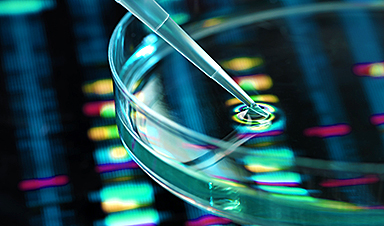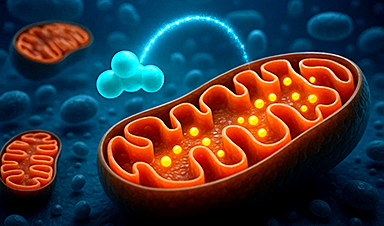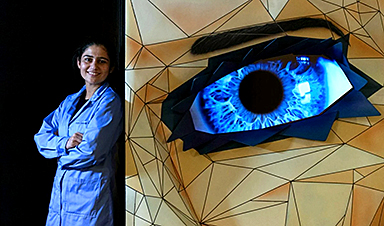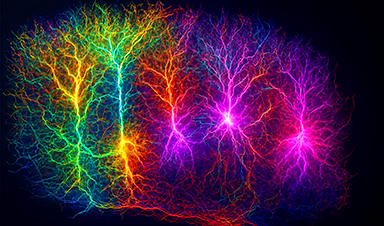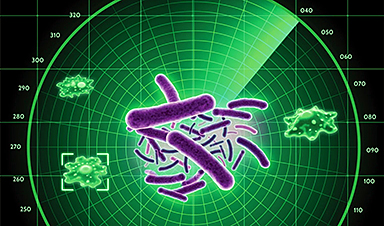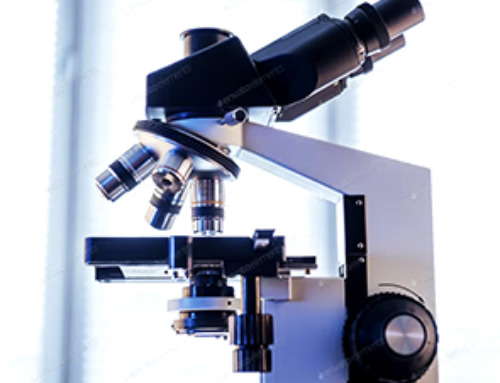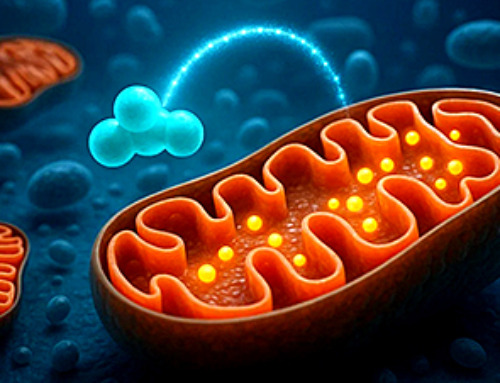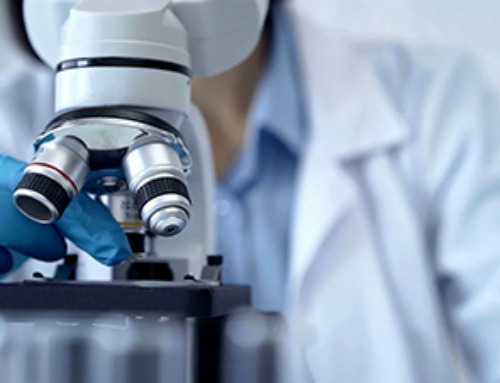Scientists have discovered a way to target elusive circular fragments of DNA that drive the survival of some of the most aggressive cancers, paving the way for future treatments.
In three groundbreaking papers published today in Nature, scientists from the Cancer Grand Challenges team eDyNAmiC and their international collaborators at the Francis Crick Institute and University College London (UCL) shed light on the unique behaviour of extrachromosomal DNA (ecDNA), small, circular DNA structures that are common in some of the most difficult to treat cancers.
The papers identify, for the first time, how to specifically target cancer cells containing this malignant DNA, a finding that could make aggressive cancers – such as glioblastoma, triple negative breast cancer or small cell lung cancer – much easier to treat in future.
The research reveals just how commonplace ecDNA is across cancer types and explain how it enables tumors to rapidly alter their genomes to resist treatment.
In one paper, the researchers identified a drug which specifically targets and kills ecDNA-containing cancer cells while sparing normal cells.
Team eDyNAmiC is funded through Cancer Grand Challenges, a research initiative co-founded by Cancer Research UK and the National Cancer Institute in the US and produced by an international team featuring scientists at Stanford Medicine, the Francis Crick Institute and UCL.
The new papers reveal more about the structure of ecDNA and highlight how future cancer drugs may target it to stop the disease in its tracks.
Many of the most aggressive cancers depend on ecDNA for survival, and as these cancers advance, ecDNA drives their resistance to treatment, leaving patients with few options. By targeting ecDNA, we could cut the lifeline of these relentless tumors, turning a terrible prognosis into a treatable one.”
Dr David Scott, Director of Cancer Grand Challenges, Cancer Research UK
eDyNAmiC team lead and Professor of Pathology at Stanford Medicine, Dr Paul Mischel, said:
“We thought we understood the structure of cancer genomes, but in fact, something very important was missing. The discovery of extrachromosomal DNA, just how common it really is, and what it actually does, reveals a new layer of complexity in cancer evolution. It not only facilitates rapid genetic changes but also highlights the cunning strategies cancer cells use to evade treatment, suppress the immune system, and survive. Understanding ecDNA is crucial for developing innovative therapies that can outsmart these relentless adversaries. We hope that these discoveries will yield benefit for patients with the most aggressive forms of cancer.”
Our DNA is usually stored within structures called chromosomes which are found in nearly every cell in the body. They ensure that when cells divide, their DNA is copied accurately into new cells.
However, ecDNA exists outside the chromosomes in tiny circles of rogue genetic material. These runaway particles carry important cancer-driving genes and don’t follow the same rules as chromosomal DNA, allowing cancer cells to adapt quickly, evade treatments, and grow uncontrollably.
The presence of ecDNA is rare in normal human cells, and when it does appear, it is often associated with certain diseases or abnormal cellular processes.
Dr Mischel’s lab at Stanford first discovered the critical role that ecDNA plays in the evolution and treatment resistance of aggressive cancers in a landmark paper published in 2014.
In 2022, the Cancer Grand Challenges (CGC) initiative awarded £20m to Dr Mischel and a team of internationally recognized experts, including co-leads for the papers, Dr Howard Chang and Dr Mariam Jamal-Hanjani, to take our knowledge of ecDNA further.
The papers published today represent some of the most important discoveries to come from the CGC eDyNAmiC team, which is made up of scientists from 13 research institutes across the globe.
The major findings from each paper:
Paper 1: THE UNIQUE BIOLOGY OF ECDNA
ecDNA plays a unique and chaotic role in cancer. Unlike the structured replication of normal DNA, ecDNA replicates in a rapid and unpredictable manner, dramatically changing its genetic makeup over just a few generations. This chaos benefits the tumor, enabling it to grow quickly, spread aggressively, and develop resistance to treatments.
- The open structure of ecDNA gives easy access to the cell machinery which is responsible for turning genes into proteins which carry out functions in the cell. This amplifies the activity of cancer-promoting genes within the tumor.
- Some ecDNAs can be passed down to new cells together, breaking the usual rules of genetic inheritance and allowing cells to inherit multiple benefits at once. In other cases, ecDNAs are distributed unevenly during cell division, creating more variation. Together, these processes help cancer cells adapt and grow faster than normal cells.
- The researchers identified that ecDNA can contain ‘altruistic oncogenes’ that only exist to promote the activity of other cancer genes.
- Overall, ecDNA’s flexibility and rapid structural changes make it a powerful tool for cancer cells to adapt and survive in challenging environments.
Paper 2: ECDNA’S IMPACT IN THE CLINIC
Patients with cancers that contain ecDNA generally have worse outcomes and the amount of ecDNA tends to increase during treatment, suggesting that ecDNA may play a role in treatment resistance.
Using data from Genomics England’s 100,000 Genomes Project housed in the National Genomics Research Library, whole genome sequence data from nearly 15,000 cancer patients across 39 tumor types were analyzed. Researchers from the Francis Crick Institute and eDyNAmiC discovered just how significant ecDNA is in cancer:
- Nearly 17.1% of the tumor samples from this dataset contained ecDNA, with particularly high rates observed in breast cancer.
- Most of the cancers in this dataset were early stage, suggesting that the actual prevalence of ecDNA may be even higher, as it tends to appear more frequently in later-stage cancers.
- Certain mutational signatures found in the tumor DNA, like those associated with tobacco smoking, positively correlated with the presence of ecDNA.
- They found that ecDNAs don’t just carry cancer-promoting genes; they also harbor genes that help the cancer cells evade the immune system. This has significant implications for how well patients with high levels of ecDNA will respond to immunotherapies.
eDyNAmiC investigator at The Francis Crick Institute, Dr Chris Bailey, said:
“This work has shown just how common ecDNAs are in cancer and how their presence is often linked to poorer patient survival. We found that, in addition to driving cancer growth, many ecDNAs carry genes that can supress the immune system, possibly helping tumors evade immune detection. This work paves the way for future research aimed at limiting the replication of ecDNA, with the hope of improving outcomes for cancer patients.”
This work is from the Cancer Evolution and Genome Instability Laboratory under Professor Charles Swanton at the Francis Crick Institute, in collaboration with team eDyNAmiC.
Paper 3: THE FIRST ECDNA-TARGETING DRUG
The unique biology of ecDNA provides significant advantages for the tumors they inhabit – but also paints a target on their backs. In this paper, researchers identified a drug (BBI-2779, developed by biotechnology company, Boundless Bio) which specifically targets and kills ecDNA-containing cancer cells while sparing normal cells.
In tests with mice, BBI-2779 effectively reduced tumor growth and prevented resistance to another cancer drug which was used in the study.
BBI-2779 works by targeting a protein called CHK1 which plays a protective role when ecDNA is copying its DNA.
Two molecular machines run along the ecDNA – one copies it, while the other reads it to make proteins – but like two trains running along one track, they must take turns or risk collision. In cancer cells with ecDNA, this delicate process is constantly at risk of causing severe DNA damage.
To prevent this from happening, cells rely heavily on CHK1, but when CHK1 is inhibited with BBI-2779, they are unable to repair DNA damage, resulting in their death.
CHK1 inhibitors have been in clinical development for some time, due to their potential to interfere with cell growth, but the development of BBI-2779 is especially promising. It’s more potent and highly selective, and could benefit patients with ecDNA, offering a clearer way to identify patients who may respond best. This advancement could pave the way for more targeted treatment options for aggressive cancers.
Building on their work, the team is investigating how ecDNA disables the immune system and exploring ways to reactivate it. They are also uncovering other complex mechanisms related to ecDNA, with the hope that these could be targeted by new treatments.
Boundless Bio is continuing this research to determine whether BBI-2779 will have the same effect in human patients.
News
Differentiating cancerous and healthy cells through motion analysis
Researchers from Tokyo Metropolitan University have found that the motion of unlabeled cells can be used to tell whether they are cancerous or healthy. They observed malignant fibrosarcoma cells and [...]
This Tiny Cellular Gate Could Be the Key to Curing Cancer – And Regrowing Hair
After more than five decades of mystery, scientists have finally unveiled the detailed structure and function of a long-theorized molecular machine in our mitochondria — the mitochondrial pyruvate carrier. This microscopic gatekeeper controls how [...]
Unlocking Vision’s Secrets: Researchers Reveal 3D Structure of Key Eye Protein
Researchers have uncovered the 3D structure of RBP3, a key protein in vision, revealing how it transports retinoids and fatty acids and how its dysfunction may lead to retinal diseases. Proteins play a critical [...]
5 Key Facts About Nanoplastics and How They Affect the Human Body
Nanoplastics are typically defined as plastic particles smaller than 1000 nanometers. These particles are increasingly being detected in human tissues: they can bypass biological barriers, accumulate in organs, and may influence health in ways [...]
Measles Is Back: Doctors Warn of Dangerous Surge Across the U.S.
Parents are encouraged to contact their pediatrician if their child has been exposed to measles or is showing symptoms. Pediatric infectious disease experts are emphasizing the critical importance of measles vaccination, as the highly [...]
AI at the Speed of Light: How Silicon Photonics Are Reinventing Hardware
A cutting-edge AI acceleration platform powered by light rather than electricity could revolutionize how AI is trained and deployed. Using photonic integrated circuits made from advanced III-V semiconductors, researchers have developed a system that vastly [...]
A Grain of Brain, 523 Million Synapses, Most Complicated Neuroscience Experiment Ever Attempted
A team of over 150 scientists has achieved what once seemed impossible: a complete wiring and activity map of a tiny section of a mammalian brain. This feat, part of the MICrONS Project, rivals [...]
The Secret “Radar” Bacteria Use To Outsmart Their Enemies
A chemical radar allows bacteria to sense and eliminate predators. Investigating how microorganisms communicate deepens our understanding of the complex ecological interactions that shape our environment is an area of key focus for the [...]
Psychologists explore ethical issues associated with human-AI relationships
It's becoming increasingly commonplace for people to develop intimate, long-term relationships with artificial intelligence (AI) technologies. At their extreme, people have "married" their AI companions in non-legally binding ceremonies, and at least two people [...]
When You Lose Weight, Where Does It Actually Go?
Most health professionals lack a clear understanding of how body fat is lost, often subscribing to misconceptions like fat converting to energy or muscle. The truth is, fat is actually broken down into carbon [...]
How Everyday Plastics Quietly Turn Into DNA-Damaging Nanoparticles
The same unique structure that makes plastic so versatile also makes it susceptible to breaking down into harmful micro- and nanoscale particles. The world is saturated with trillions of microscopic and nanoscopic plastic particles, some smaller [...]
AI Outperforms Physicians in Real-World Urgent Care Decisions, Study Finds
The study, conducted at the virtual urgent care clinic Cedars-Sinai Connect in LA, compared recommendations given in about 500 visits of adult patients with relatively common symptoms – respiratory, urinary, eye, vaginal and dental. [...]
Challenging the Big Bang: A Multi-Singularity Origin for the Universe
In a study published in the journal Classical and Quantum Gravity, Dr. Richard Lieu, a physics professor at The University of Alabama in Huntsville (UAH), which is a part of The University of Alabama System, suggests that [...]
New drug restores vision by regenerating retinal nerves
Vision is one of the most crucial human senses, yet over 300 million people worldwide are at risk of vision loss due to various retinal diseases. While recent advancements in retinal disease treatments have [...]
Shingles vaccine cuts dementia risk by 20%, new study shows
A shingles shot may do more than prevent rash — it could help shield the aging brain from dementia, according to a landmark study using real-world data from the UK. A routine vaccine could [...]
AI Predicts Sudden Cardiac Arrest Days Before It Strikes
AI can now predict deadly heart arrhythmias up to two weeks in advance, potentially transforming cardiac care. Artificial intelligence could play a key role in preventing many cases of sudden cardiac death, according to [...]
